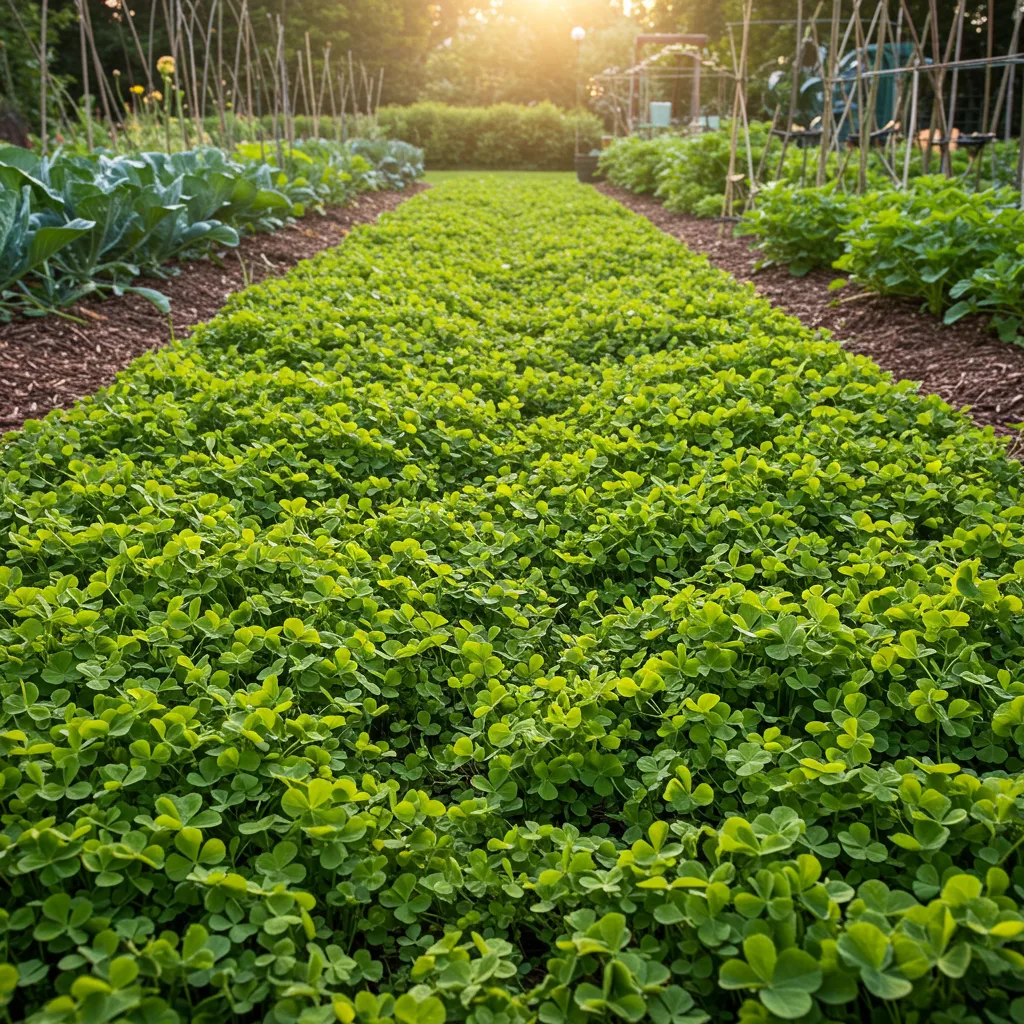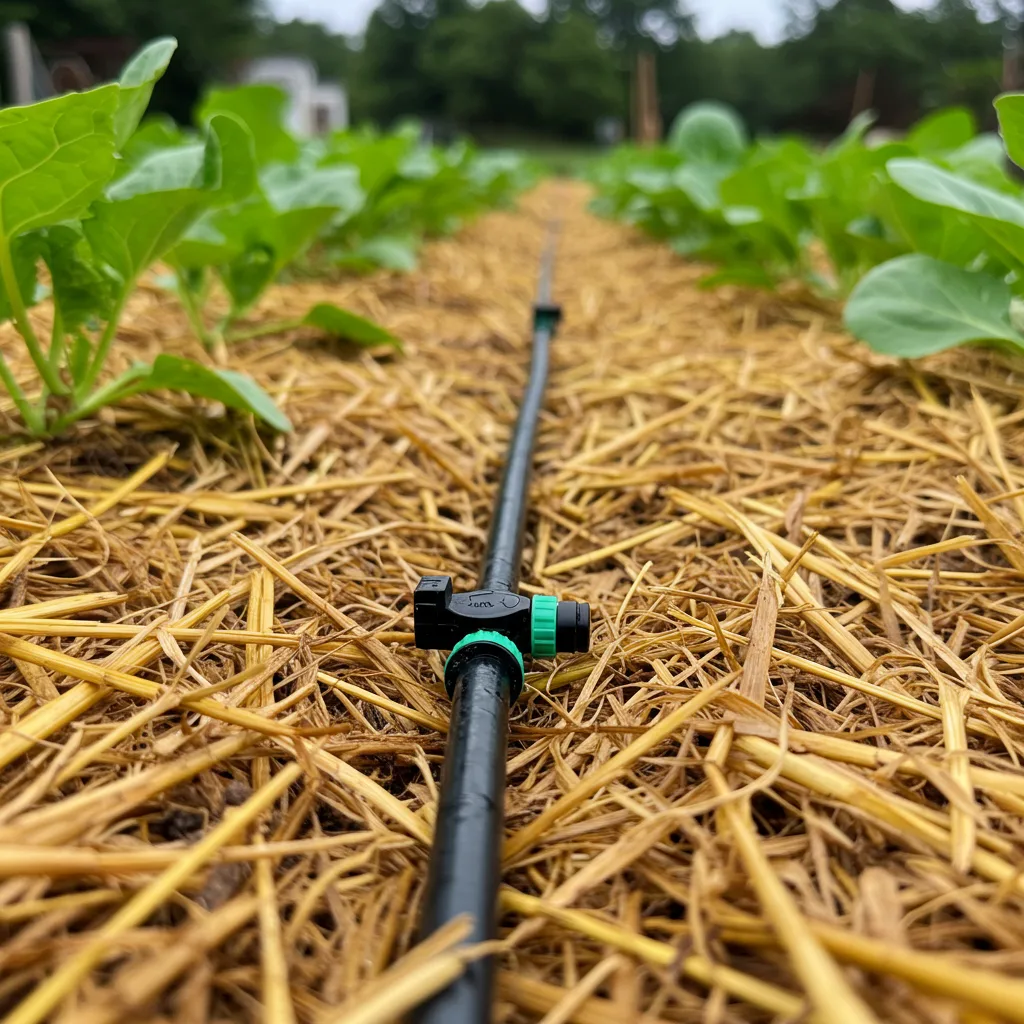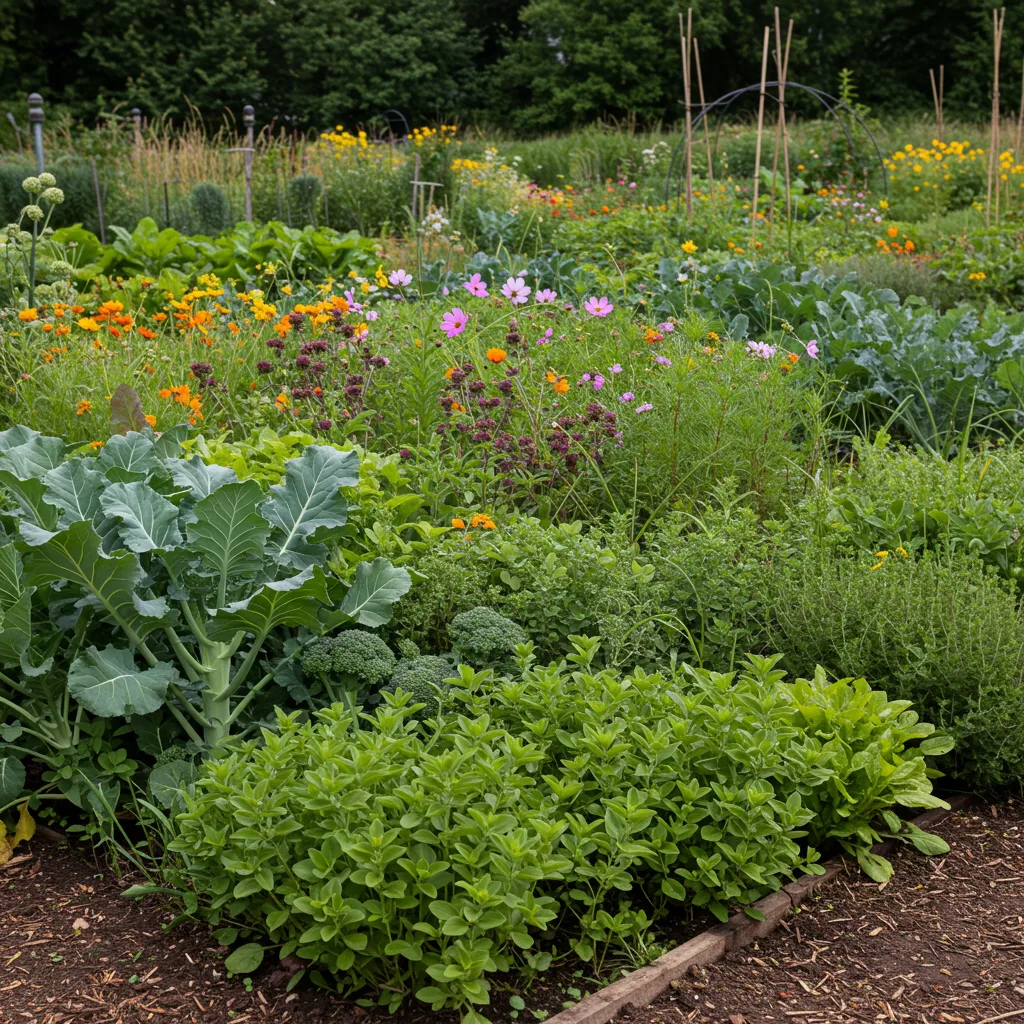15 Sustainable Gardening Practices That Regenerate Your Soil (And Save Water!) | EcoDweller
Sustainable gardening isn’t just about growing plants—it’s about creating resilient ecosystems that work with nature rather than against it. As of April 2025, with intensifying climate challenges and rising water costs, adopting eco-friendly gardening techniques has never been more relevant. The good news? These practices not only nurture the environment but also create more productive gardens while reducing your resource consumption and expenses.
Whether you’re tending a small balcony garden or managing a larger backyard plot, this comprehensive guide will walk you through 15 proven sustainable gardening methods that regenerate soil health and conserve precious water. We’ll explore practical techniques backed by science, share expert insights on implementation, and break down how each practice benefits both your garden and the planet. Ready to transform your garden into a thriving, sustainable oasis? Let’s dig in!
Why Sustainable Gardening Matters Now More Than Ever
Traditional gardening methods often deplete soil, waste water, and rely heavily on synthetic inputs. Sustainable approaches offer meaningful alternatives:
- Resource Conservation: According to the EPA, residential outdoor water use accounts for nearly 30% of household water consumption—with sustainable practices, you can slash this significantly.
- Climate Resilience: Healthy, regenerated soil captures more carbon and withstands weather extremes better than depleted soil, as demonstrated in Rodale Institute’s long-term trials.
- Biodiversity Support: Eco-friendly gardens create habitat for beneficial insects, pollinators, and local wildlife—critical as natural habitats decline according to the IPBES Global Assessment.
- Food Security: Building self-sustaining garden systems ensures more reliable yields regardless of external supply chains.
- Economic Benefits: Research shows sustainable gardens can reduce water bills by 20-50% while decreasing the need for purchased fertilizers and amendments.
Building Healthy Soil: The Foundation of Sustainable Gardening
Soil isn’t just dirt—it’s a complex living ecosystem. These practices help regenerate soil health naturally.
1. Composting: Nature’s Perfect Recycling System
Transform kitchen scraps and yard waste into nutrient-rich soil amendment through composting. This cornerstone practice reduces landfill waste while building soil fertility.
- Implementation: Maintain a 3:1 ratio of carbon-rich “browns” (leaves, cardboard) to nitrogen-rich “greens” (food scraps, grass clippings).
- Benefits: Improves soil structure, adds essential nutrients, and introduces beneficial microorganisms according to The Composting Council.
- Resource Savings: Reduces or eliminates the need for purchased fertilizers (saving $30-50 annually) and diverts up to 30% of household waste from landfills.
Tip: New to composting? Start with a simple kitchen compost bin for scraps.
2. No-Dig/No-Till Gardening
This approach minimizes soil disturbance, protecting soil structure and the complex web of beneficial organisms within.
- Implementation: Instead of digging, layer organic materials (compost, mulch) on top of soil and let nature incorporate them.
- Benefits: Preserves soil structure, prevents weed seed activation, and protects soil life including earthworms and mycorrhizal fungi.
- Resource Savings: Research published in Soil & Tillage Research shows no-till practices reduce water needs by up to 30% through improved soil structure and water retention.
Tip: For new beds, layer cardboard directly over grass, add compost on top, and plant directly—no digging required!
3. Cover Cropping
Plant specific crops like clover, buckwheat, or winter rye during off-seasons or in unused garden areas to protect and improve soil.
- Implementation: Sow cover crop seeds 4-6 weeks before first frost for winter coverage or in any temporarily unused garden space.
- Benefits: Prevents erosion, suppresses weeds, adds organic matter, and—with legumes like clover—fixes nitrogen from the air into the soil.
- Resource Savings: Can provide up to 100 pounds of nitrogen per acre when using leguminous cover crops according to SARE research, reducing fertilizer needs.
Tip: For small gardens, try clover between vegetable rows for continuous soil coverage and nitrogen fixation.

4. Mulching Strategically
Apply organic materials like wood chips, straw, or leaf mold around plants to conserve moisture and suppress weeds.
- Implementation: Maintain a 2-4 inch layer of organic mulch, keeping it pulled back slightly from plant stems and tree trunks.
- Benefits: Reduces water evaporation, moderates soil temperature, prevents weed germination, and adds organic matter as it breaks down.
- Resource Savings: University of Minnesota Extension research shows proper mulching reduces watering needs by 30-50% and can eliminate the need for herbicides.
Tip: Many municipalities offer free wood chip mulch from tree trimming operations—a perfect example of cost-saving sustainable practice.
5. Biochar Integration
Incorporate this charcoal-like substance to improve soil structure and sequester carbon for centuries.
- Implementation: Mix small amounts (5-10% by volume) of biochar into compost before applying to soil.
- Benefits: Creates permanent soil structure improvement, provides habitat for beneficial microbes, and locks carbon in soil.
- Resource Savings: Studies in Frontiers in Sustainable Food Systems show biochar improves water retention by up to 30% and can reduce fertilizer needs by 10-15%.
Tip: “Charge” biochar by soaking in compost tea before adding to soil to maximize benefits.
Water Conservation Strategies for Eco-Friendly Gardens
With water becoming an increasingly precious resource, these techniques help minimize usage while maintaining healthy plants.
6. Rainwater Harvesting
Collect rainwater from roofs and other surfaces to use during dry periods—nature’s free irrigation system.
- Implementation: Install rain barrels at downspouts or create more elaborate collection systems depending on your needs.
- Benefits: Provides chlorine-free water that plants prefer, reduces runoff, and lowers water bills.
- Resource Savings: A single 55-gallon rain barrel can save approximately 1,300 gallons of water during growing season according to EPA’s SoakUpTheRain program.
Tip: Even in areas with lower rainfall, a 1,000 square foot roof can collect about 600 gallons of water from just 1 inch of rain.
7. Drip Irrigation Systems
Replace inefficient sprinklers with precise drip systems that deliver water directly to plant roots.
- Implementation: Install simple drip lines near plant bases, either on the surface or under mulch.
- Benefits: Minimizes evaporation, reduces weed growth, prevents leaf diseases, and ensures consistent moisture.
- Resource Savings: The Irrigation Association reports drip systems use 30-50% less water than conventional methods—potentially saving thousands of gallons per season.
Tip: Add a timer for automation and consistent watering even when you’re away.
8. Ollas (Buried Clay Pots)
This ancient technique uses unglazed clay vessels buried in garden beds to slowly release water directly to roots.
- Implementation: Bury neck-deep, refill periodically, and plant around the perimeter.
- Benefits: Provides slow, steady moisture, works without electricity, and virtually eliminates water waste.
- Resource Savings: Permaculture Research Institute documents show ollas can reduce water usage by up to 70% compared to surface watering.
Tip: Make your own ollas from terracotta flower pots sealed together—check our DIY guides for instructions.

9. Keyhole Garden Beds
Design circular raised beds with a central compost area that distributes nutrients and moisture outward.
- Implementation: Create a circular bed with a “keyhole” path to access the central compost basket.
- Benefits: Combines water efficiency, composting, and ergonomic design in one system.
- Resource Savings: FAO studies in Africa show keyhole gardens reduce water needs up to 80% while eliminating fertilizer requirements.
Tip: Perfect for urban gardeners with limited space—check our urban gardening guide for space-saving tips.
10. Hydrozoning
Group plants with similar water needs together to prevent overwatering some while underwatering others.
- Implementation: Plan garden layout by water requirements—high, moderate, and low zones.
- Benefits: Optimizes irrigation efficiency, improves plant health, and simplifies garden management.
- Resource Savings: Colorado State University Extension reports hydrozoning can reduce water usage by 20-40% through more targeted application.
Tip: Place thirstier plants in naturally lower areas where water collects after rain.
Biodiversity and Natural Pest Management
Working with nature creates resilient garden ecosystems that reduce or eliminate the need for interventions.
11. Companion Planting
Strategically pair plants that benefit each other through pest deterrence, pollination enhancement, or structural support.
- Implementation: Research beneficial plant combinations before planning your garden layout (e.g., tomatoes and basil, carrots and onions).
- Benefits: Reduces pest issues naturally, optimizes space usage, and often improves flavor and yields.
- Resource Savings: Research in Scientia Horticulturae shows companion planting can eliminate need for pesticides while increasing yields by 10-25%.
Tip: The “Three Sisters” method (corn, beans, squash) exemplifies traditional companion planting—corn provides structure, beans fix nitrogen, and squash leaves shade soil.
12. Pollinator Gardens
Dedicate areas to native flowering plants that support bees, butterflies, and other essential pollinators.
- Implementation: Include at least three flowering species for each season to provide continuous nectar sources.
- Benefits: Improves crop yields through enhanced pollination, supports declining pollinator populations, and adds beauty.
- Resource Savings: Flowering plants like borage and phacelia attract pollinators that can increase vegetable yields by up to 30% according to The Xerces Society.
Tip: Focus on regional native plants that are naturally adapted to your climate and require minimal resources.
13. Beneficial Insect Habitats
Create environments that attract predatory insects to control pest populations naturally.
- Implementation: Install insect hotels, leave areas of bare soil for ground-nesting bees, and include umbelliferous flowers like dill and fennel.
- Benefits: Establishes natural pest control systems, reduces or eliminates pesticide needs, and increases biodiversity.
- Resource Savings: UC Agriculture and Natural Resources notes a single ladybug can consume up to 5,000 aphids in its lifetime—providing free pest control.
Tip: Shallow water sources with landing spots (like stones) provide essential hydration for beneficial insects.
| Sustainable Practice | Water Savings | Soil Impact | Biodiversity Benefit | Financial Savings |
|---|---|---|---|---|
| Composting | 20-30% | High | Medium | $30-50/year |
| No-Dig Gardening | 20-40% | Very High | High | $20-40/year |
| Mulching | 30-50% | Medium | Low | $25-45/year |
| Rainwater Harvesting | 50-80% | Low | Low | $50-100/year |
| Drip Irrigation | 30-50% | Low | Low | $40-70/year |
Note: Savings vary based on garden size, local conditions, and implementation quality. Combining multiple practices compounds benefits.
14. Polyculture and Food Forests
Move beyond monocultures to diverse plantings that mimic natural ecosystems with multiple layers.
- Implementation: Integrate canopy trees, understory shrubs, perennial vegetables, ground covers, root crops, and vines in the same area.
- Benefits: Creates resilient, self-maintaining systems with enhanced yields per square foot.
- Resource Savings: Association for Temperate Agroforestry studies show mature food forests can require up to 90% less water and almost no external inputs compared to conventional gardens.
Tip: Start small with a polyculture “guild”—a compatible plant community—around an existing fruit tree.
15. Perennial Integration
Incorporate more perennial food plants that return year after year without replanting.
- Implementation: Gradually replace some annual crops with perennial alternatives like asparagus, rhubarb, berries, and perennial greens.
- Benefits: Develops deeper root systems that access nutrients and water unavailable to annuals while requiring less labor.
- Resource Savings: Perennial Solutions research shows perennials reduce water needs by 30-50% after establishment and eliminate annual soil disturbance.
Tip: Many herbs like rosemary, thyme, and oregano are perennials that offer both culinary and pollinator benefits.

Getting Started: Implementation Plan for Beginners
Feeling inspired but unsure where to begin? Start with this progressive approach:
- Month 1: Set up a compost system and begin mulching existing plants.
- Month 2: Install a rain barrel and implement basic hydrozoning.
- Month 3: Convert one garden bed to no-dig method and add companion plants.
- Month 4: Create a small pollinator patch and integrate some simple water-saving techniques.
- Month 5: Experiment with one perennial food plant and plan for seasonal cover crops.
- Nature journal research shows regenerative gardens can sequester up to 8 tons of carbon per acre annually.
- Combined water-saving techniques can reduce garden water usage by 50-80% according to American Water Works Association.
- Gardens with diverse plantings show 20-60% higher total yields than monocultures based on agroecology research.
- Healthy, biodiverse soil contains up to 1 billion microorganisms per teaspoon as documented by the Soil Science Society of America.
- Recent studies by Ohio State University Extension show sustainable gardens require 45% less ongoing maintenance time after initial setup.
Adapting to Your Climate Zone
While these practices work universally, some adjustments help optimize for your specific region:
- Arid/Desert Regions: Emphasize deeper mulching (4-6 inches), rainwater harvesting, ollas, and native xeriscaping plants recommended by the Arizona Municipal Water Users Association.
- Humid Areas: Focus on raised beds for drainage, humidity-tolerant perennials, and vertical growing to improve air circulation as suggested by UNH Extension.
- Cold Climates: Utilize season extension techniques, cold frames, and select cold-hardy perennials with shorter growing seasons recommended by Minnesota Extension.
- Coastal Zones: Choose salt-tolerant plants, implement windbreaks, and focus on soil building to counter sandy conditions as advised by Clemson Coastal Research.
- Urban Settings: Maximize vertical space, employ container-specific water conservation, and integrate small-scale intensive techniques—learn more in our urban gardening guide.
Final Thoughts: Growing a Better Future
Sustainable gardening represents more than just a set of practices—it’s a mindset that reconnects us with natural cycles while creating abundance. By implementing these 15 methods, you’re not only growing healthier plants and reducing resource consumption but contributing to broader environmental regeneration.

